Abstract
1 The time course of the positive inotropic effect of theophylline was compared with the time course of the uptake and release of [3H]-theophylline in guinea-pig isolated, electrically driven hearts perfused by the Langendorff method.
2 Formation of theophylline metabolites could not be detected under the experimental conditions used.
3 Theophylline entered myocardial tissue very rapidly in two different phases. The first process (half-time 21 s) amounted to 93% and the second (half-time 5 min 50 s) to 7% of the total uptake. The development of the positive inotropic effect of theophylline was about four times faster than even the rapid component of the uptake of the drug into the myocardium.
4 The amount of theophylline accumulated in myocardial tissue (after 10 min perfusion) incerased proportionally with theophylline concentrations in the perfusion media and no signs of saturation were detected. The tissue-medium ratio did not exceed 1. The water content of the myocardial tissue amounted to about 80% at all theophylline concentrations examined.
5 The uptake of theophylline (3 mg/ml) was diminished by 9.2% after pretreatment of the hearts with caffeine (1 mg/ml). Theophylline uptake was also decreased by 13.5% when caffeine-pretreated hearts were perfused with a solution containing theophylline (300 μg/ml) plus caffeine (1 mg/ml).
6 Theophylline release from the hearts was also very rapid. The efflux curve was composed of three components (half-times: 24 s; 1 min 24 s; 6 min 18 seconds). The intercepts of the linear portions of the efflux curve occurred at 61%, 38% and 1%, respectively. Contractile force and theophylline content in myocardial tissue declined in a similar manner.
7 It is concluded that theophylline enters myocardial tissue very rapidly by passive diffusion. Theophylline distributes itself in the heart as freely as in the perfusion medium. A very small amount may be bound within the cell in a relatively specific way.
8 It seems possible that the positive inotropic effect of theophylline is partly due to an action of the drug on intracellular calcium binding or storage sites. However, the principal action of theophylline is assumed to be on the sarcolemma where it increases calcium influx from the extracellular space. This conclusion is based on the fact that the time courses of the increase in contractile force and of theophylline uptake into the cell were dissimilar.
Full text
PDF
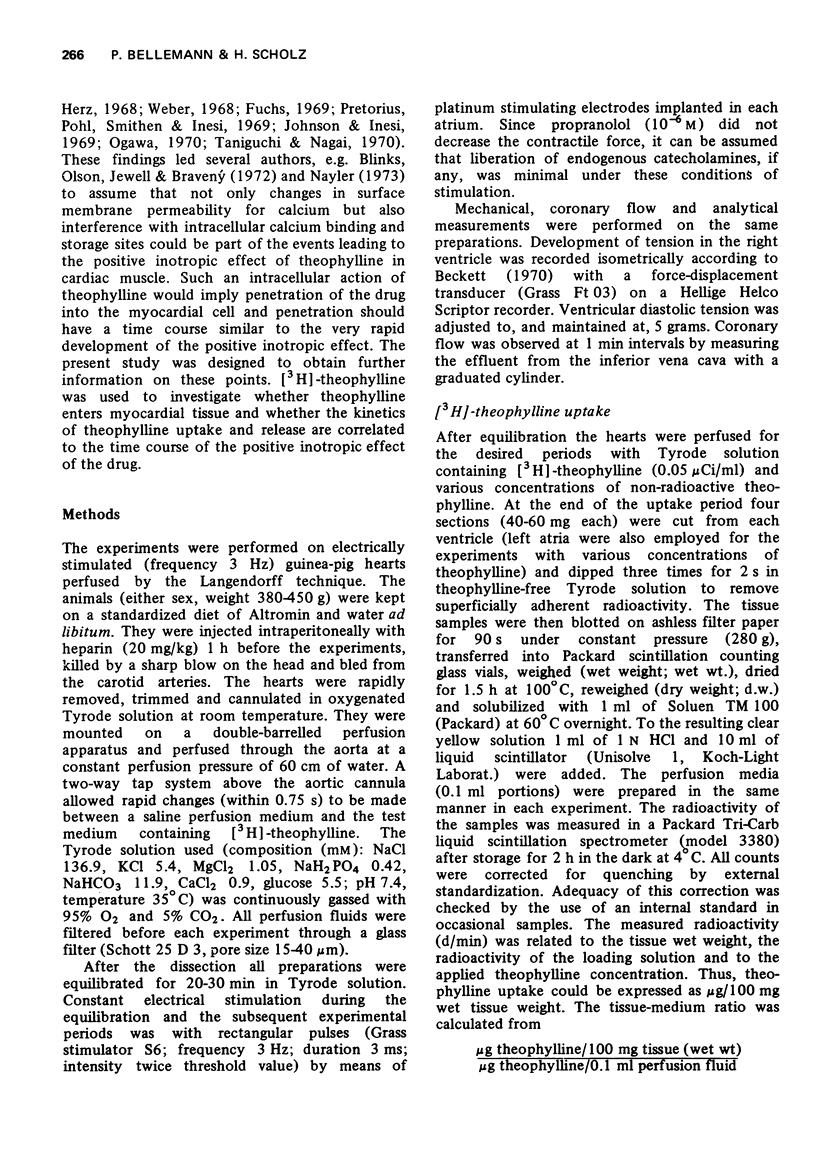
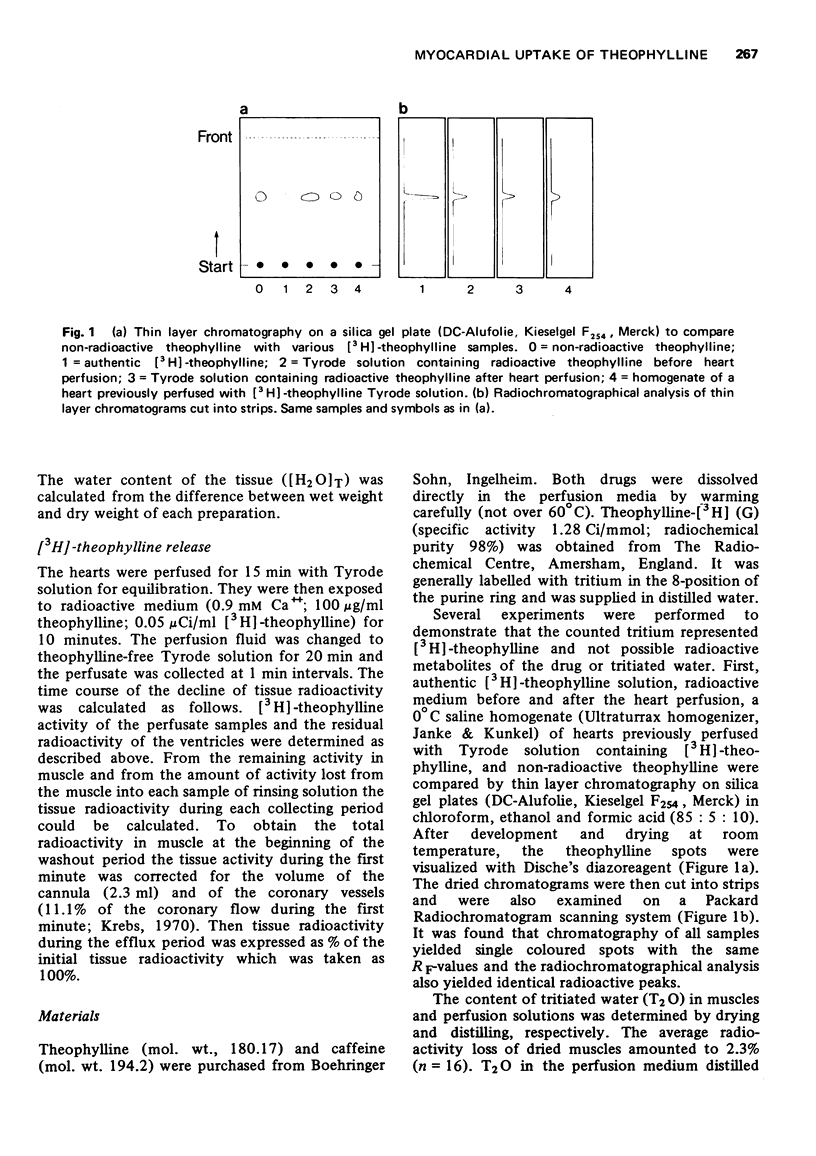

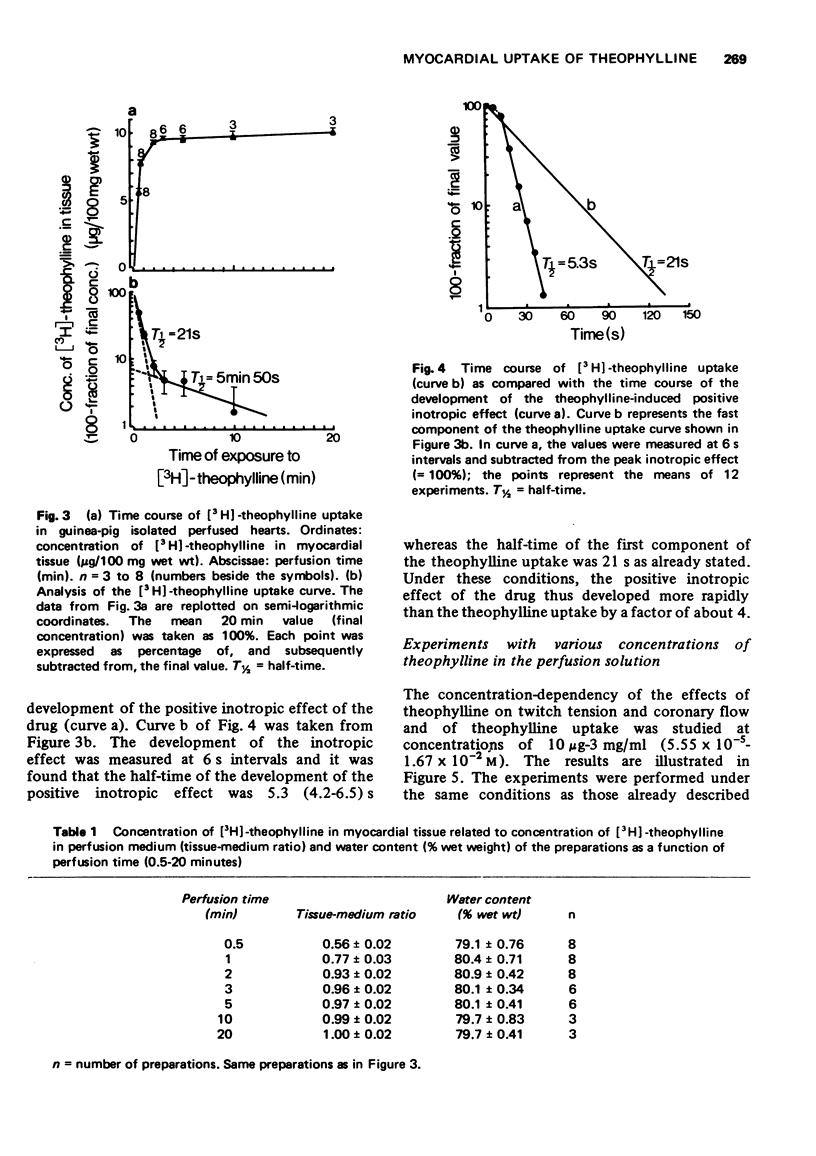
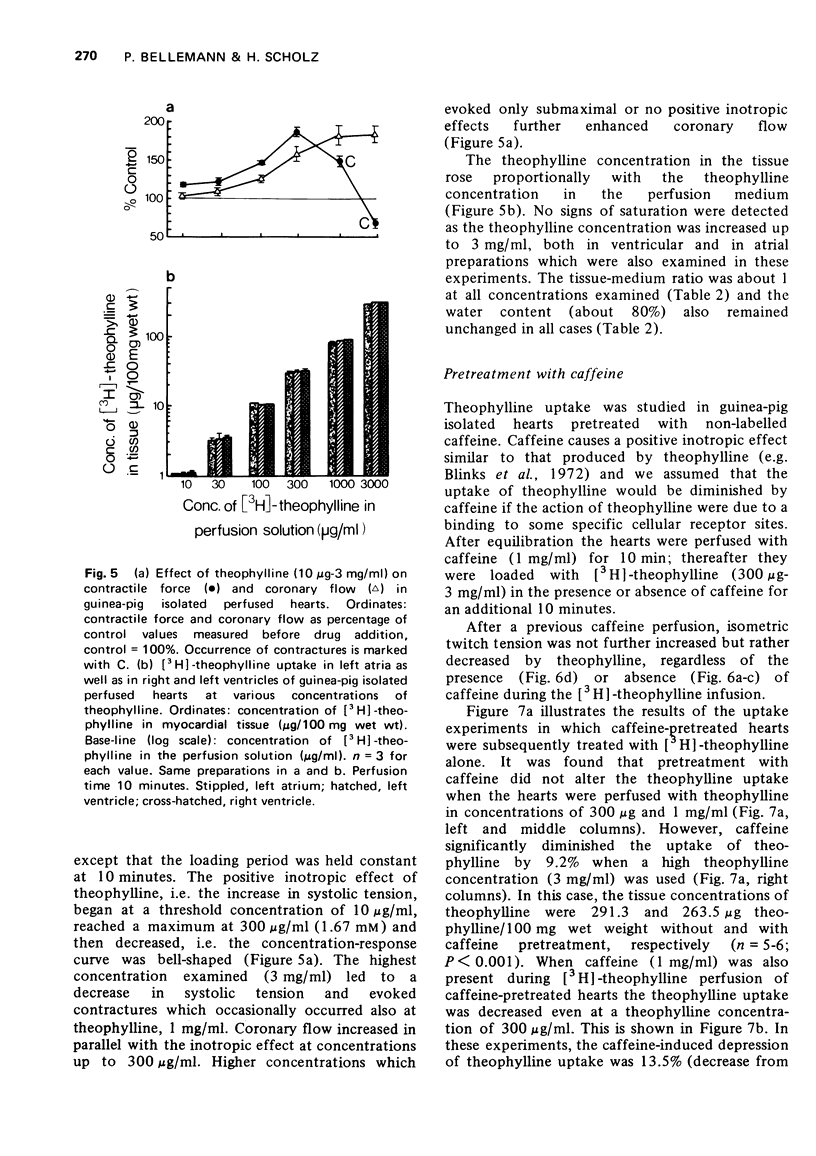
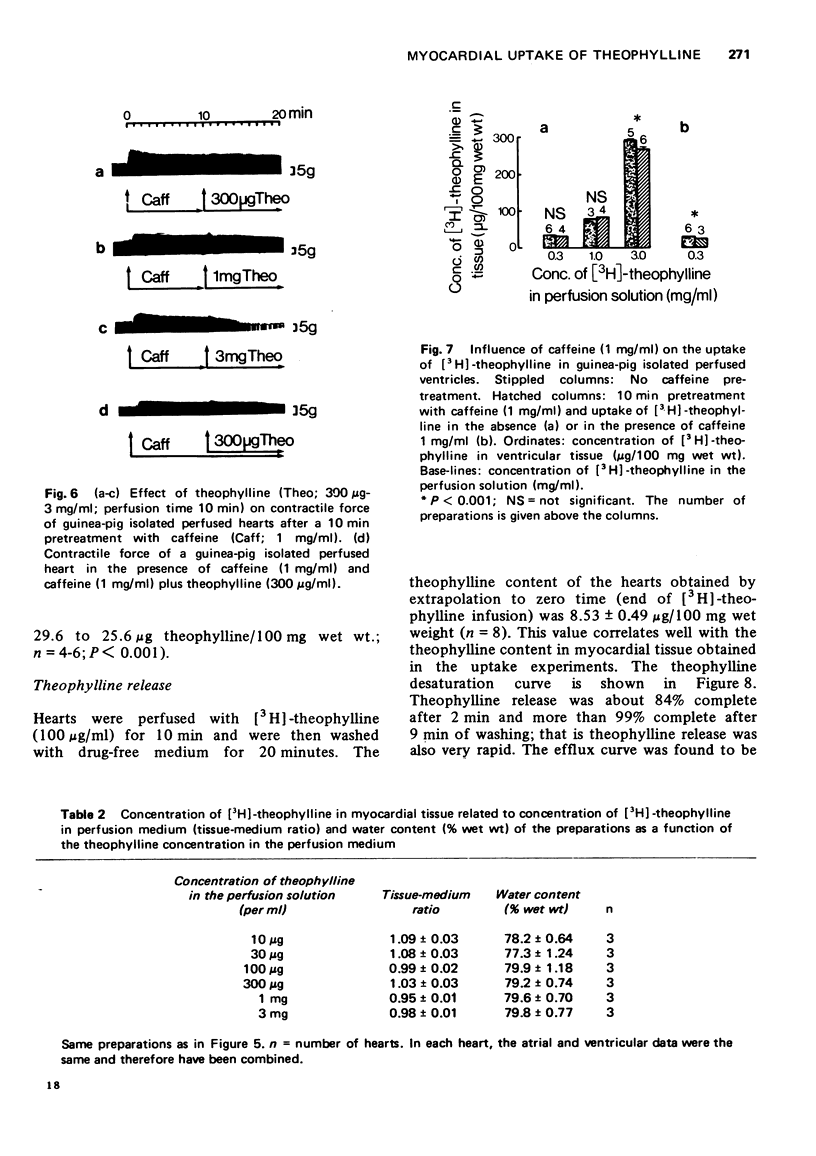
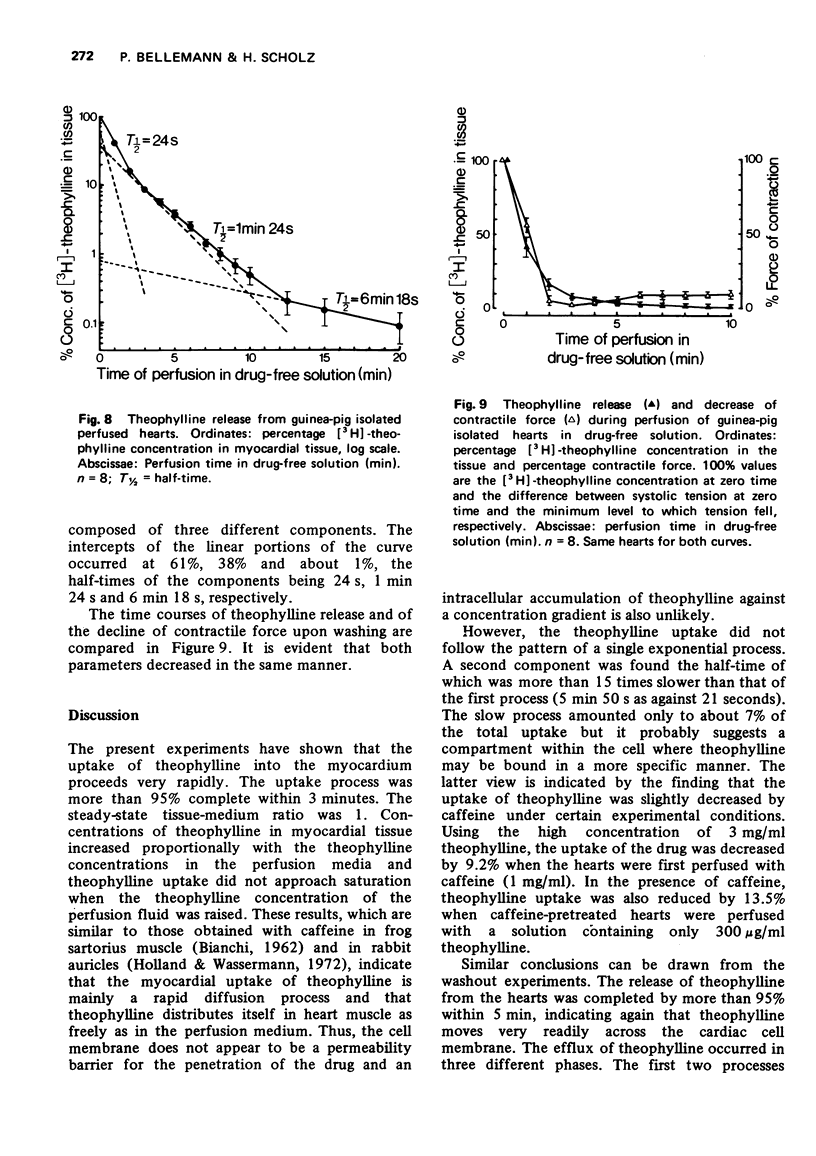
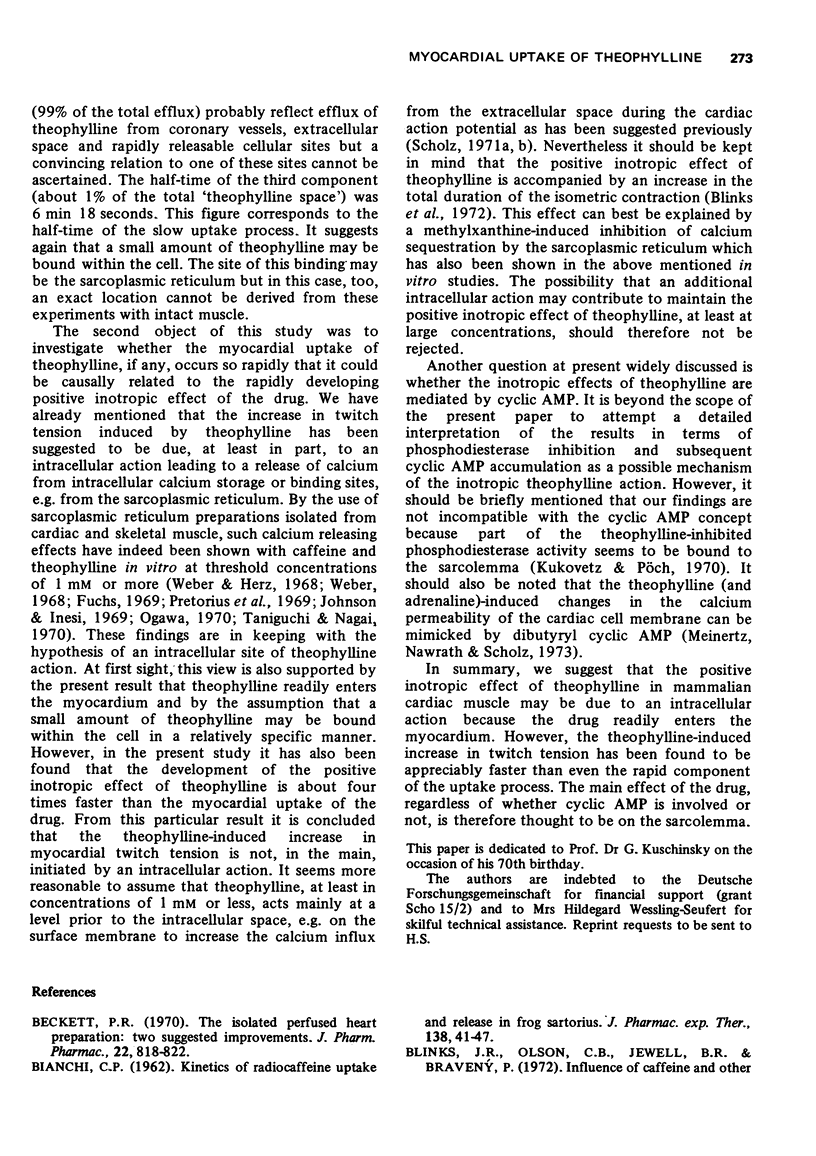
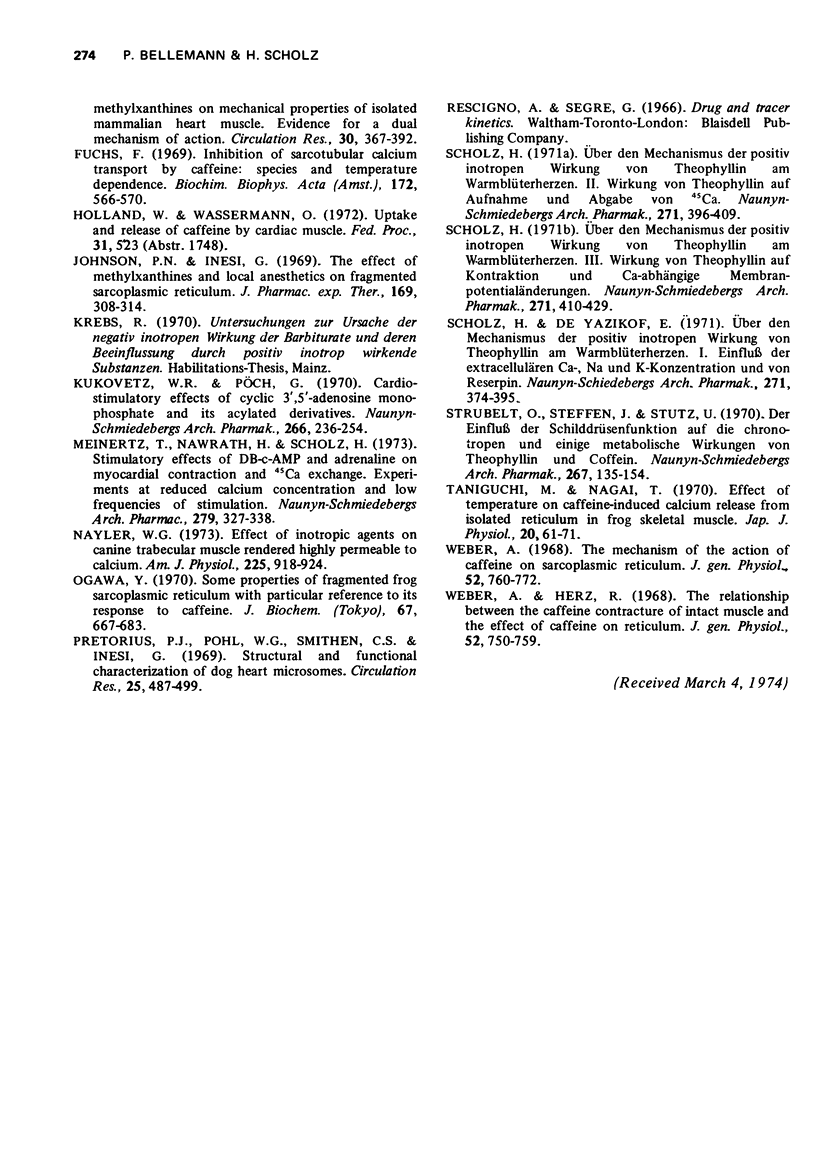
Selected References
These references are in PubMed. This may not be the complete list of references from this article.
- Beckett P. R. The isolated perfused heart preparation: two suggested improvements. J Pharm Pharmacol. 1970 Nov;22(11):818–822. doi: 10.1111/j.2042-7158.1970.tb08445.x. [DOI] [PubMed] [Google Scholar]
- Blinks J. R., Olson C. B., Jewell B. R., Bravený P. Influence of caffeine and other methylxanthines on mechanical properties of isolated mammalian heart muscle. Evidence for a dual mechanism of action. Circ Res. 1972 Apr;30(4):367–392. doi: 10.1161/01.res.30.4.367. [DOI] [PubMed] [Google Scholar]
- Fuchs F. Inhibition of sarcotubular calcium transport by caffeine: species and temperature dependence. Biochim Biophys Acta. 1969 Apr 8;172(3):566–570. doi: 10.1016/0005-2728(69)90152-2. [DOI] [PubMed] [Google Scholar]
- Johnson P. N., Inesi G. The effect of methylxanthines and local anesthetics on fragmented sarcoplasmic reticulum. J Pharmacol Exp Ther. 1969 Oct;169(2):308–314. [PubMed] [Google Scholar]
- Kukovetz W. R., Pöch G. Cardiostimulatory effects of cyclic 3',5'-adenosine monophosphate and its acylated derivatives. Naunyn Schmiedebergs Arch Pharmakol. 1970;266(3):236–254. doi: 10.1007/BF00997285. [DOI] [PubMed] [Google Scholar]
- Meinertz T., Nawrath H., Scholz H. Stimulatory effects of DB-c-AMP and adrenaline on myocardial contraction and 45Ca exchange. Experiments at reduced calcium concentration and low frequencies of stimulation. Naunyn Schmiedebergs Arch Pharmacol. 1973;279(4):327–338. doi: 10.1007/BF00500798. [DOI] [PubMed] [Google Scholar]
- Nayler W. G. Effect of inotropic agents on canine trabecular muscle rendered highly permeable to calcium. Am J Physiol. 1973 Oct;225(4):918–924. doi: 10.1152/ajplegacy.1973.225.4.918. [DOI] [PubMed] [Google Scholar]
- Ogawa Y. Some properties of fragmented frog sarcoplasmic reticulum with particular reference to its response to caffeine. J Biochem. 1970 May;67(5):667–683. doi: 10.1093/oxfordjournals.jbchem.a129295. [DOI] [PubMed] [Google Scholar]
- Pretorius P. J., Pohl W. G., Smithen C. S., Inesi G. Structural and functional characterization of dog heart microsomes. Circ Res. 1969 Oct;25(4):487–499. doi: 10.1161/01.res.25.4.487. [DOI] [PubMed] [Google Scholar]
- Scholz H., de Yazikof E. Uber den mechanismus der positiv inotropen Wirkung von Theophyllin am Warmblüterherzen. I. Einfluss der extracellulären Ca-, Na- und K-Konzentration und von Reserpin. Naunyn Schmiedebergs Arch Pharmakol. 1971;271(4):374–395. [PubMed] [Google Scholar]
- Strubelt O., Steffen J., Stutz U. Der Einfluss der Schilddrüsenfunktion auf die chronotropen und einige metabolische Wirkungen von Theophyllin und Coffein. Naunyn Schmiedebergs Arch Pharmakol. 1970;267(2):135–154. [PubMed] [Google Scholar]
- Taniguchi M., Nagai T. Effect of temperature on caffeine-induced calcium release from isolated reticulum in frog skeletal muscle. Jpn J Physiol. 1970 Feb 15;20(1):61–71. doi: 10.2170/jjphysiol.20.61. [DOI] [PubMed] [Google Scholar]
- Weber A., Herz R. The relationship between caffeine contracture of intact muscle and the effect of caffeine on reticulum. J Gen Physiol. 1968 Nov;52(5):750–759. doi: 10.1085/jgp.52.5.750. [DOI] [PMC free article] [PubMed] [Google Scholar]
- Weber A. The mechanism of the action of caffeine on sarcoplasmic reticulum. J Gen Physiol. 1968 Nov;52(5):760–772. doi: 10.1085/jgp.52.5.760. [DOI] [PMC free article] [PubMed] [Google Scholar]


